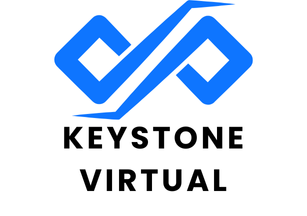Microservices architecture enhances scalability and flexibility, but it also introduces security challenges. Implementing mutual TLS (mTLS) within Kubernetes can significantly bolster communication security among services. This guide offers a detailed look at deploying mTLS, ensuring encrypted traffic and verified service identities. By mastering mTLS in your Kubernetes environment, you can embrace innovation while safeguarding your microservices, creating a robust defense against rising security threats.
Understanding Microservices Security
Microservices architecture divides applications into independent services, each with its own functionality. This approach enhances scalability but introduces unique security challenges. One primary concern is securing communication between these services, especially in environments like Kubernetes.
This might interest you : Mastering Secure File Transfers: A Comprehensive Guide to Setting Up SFTP with AWS Transfer Family
Microservices security is crucial to protect data integrity and confidentiality. As services communicate over networks, they are vulnerable to attacks such as man-in-the-middle. This is where mutual TLS (mTLS) becomes vital.
mTLS Fundamentals
mTLS ensures that both the client and server authenticate each other before data exchange. Unlike traditional TLS, which only authenticates the server, mTLS provides a two-way verification process. This mutual authentication helps prevent unauthorized access, ensuring that only trusted services communicate within the network.
This might interest you : Mastering Kubernetes RBAC: A Step-by-Step Guide to Fine-Tuning Access Control
In a Kubernetes environment, implementing Kubernetes security measures like mTLS is essential. It not only secures inter-service communication but also enhances overall system reliability. By adopting mTLS, organisations can mitigate risks associated with microservices and maintain a robust security posture.
Implementing mTLS in Kubernetes
To effectively implement mTLS in a Kubernetes setup, follow these steps to ensure secure communication between services. Begin by configuring your Kubernetes cluster to support mTLS. This involves setting up certificates for each service, which are essential for the authentication process.
Step-by-Step Guide
-
Generate Certificates: Use tools like Cert-Manager to automate the creation and management of TLS certificates within Kubernetes. This ensures that each service has a valid certificate for mTLS.
-
Configure Services: Modify the service configurations to require mTLS for communication. This involves updating the service manifests to include the necessary certificate information.
-
Deploy a Service Mesh: Implement a service mesh like Istio to simplify mTLS integration. Istio provides built-in support for mTLS, making it easier to enforce secure communication policies across your services.
Configuration Examples
- Use Istio's Mutual TLS mode to automatically manage mTLS certificates and policies.
- Configure service entries in Istio to define which services require mTLS.
Tools and Libraries
- Cert-Manager: Automates certificate management in Kubernetes.
- Istio: Provides a comprehensive solution for service management, including mTLS.
- Linkerd: Another service mesh option that supports mTLS out of the box.
Best Practices for mTLS in Microservices
Implementing mTLS best practices is essential for ensuring secure microservice communication. A key aspect is certificate management, which involves not only issuing certificates but also regularly rotating them to maintain security. Automating this process with tools like Cert-Manager can significantly reduce the potential for human error and ensure that certificates remain up-to-date.
Another vital practice is to establish robust microservices security strategies. This includes defining clear policies for which services require mTLS and ensuring that these policies are consistently enforced across the network. Utilizing a service mesh like Istio can help manage these policies efficiently, providing a standardized approach to securing service interactions.
To further enhance security, it's crucial to implement comprehensive monitoring and logging of mTLS traffic. This allows for the detection of anomalies or unauthorised access attempts, enabling a swift response to potential threats. Tools such as Prometheus and Grafana can be integrated to provide real-time insights into traffic patterns and security events.
By adhering to these best practices, organisations can significantly bolster their microservices security posture, ensuring that communication remains secure and reliable.
Troubleshooting mTLS Issues
Implementing mTLS can sometimes lead to challenges that require effective troubleshooting. Understanding the common pitfalls encountered during this process is crucial for smooth implementation. One frequent issue is the misconfiguration of certificates, which can disrupt communication between services. Ensuring that certificates are correctly issued and configured is a vital step in mTLS troubleshooting.
Diagnostic Tools and Techniques
To effectively diagnose mTLS issues, leverage tools like Istio's control plane and Kubernetes logs. These tools can help identify misconfigurations and connectivity problems. Use them to inspect certificate validity and ensure that services are communicating as expected. Another useful technique is to enable detailed logging, which can provide insights into failed authentication attempts.
Solutions for Resolving mTLS Connectivity Problems
Addressing mTLS connectivity problems often involves checking network policies and firewall settings. Ensure that all necessary ports are open and that services are permitted to communicate with each other. Additionally, verify that the service mesh configuration aligns with your security policies. By systematically addressing these areas, you can resolve many common mTLS issues and maintain secure, reliable communication between your microservices.
Real-World Use Cases of mTLS in Kubernetes
Exploring mTLS use cases in Kubernetes reveals how organisations leverage this technology to secure microservices. A notable example is a financial institution that implemented mTLS to protect sensitive transactions. By ensuring that only authorised services could communicate, they significantly reduced the risk of data breaches.
In another scenario, a healthcare provider adopted mTLS within their Kubernetes environment. This move was pivotal in safeguarding patient data, adhering to strict compliance requirements. The organisation observed a marked improvement in security posture, as mTLS effectively mitigated the threat of unauthorised access.
Lessons learned from these implementations highlight the importance of thorough planning and execution. Organisations found that integrating mTLS early in the development process simplified deployment and reduced potential issues. Additionally, they emphasised the need for ongoing monitoring to maintain security standards.
These Kubernetes examples demonstrate the practical benefits of mTLS in action. By adopting a robust security framework, companies can protect their microservices architecture, ensuring data integrity and confidentiality. Embracing these strategies not only enhances security but also builds trust with stakeholders, proving that mTLS is a valuable tool in the modern digital landscape.
Visualizing mTLS Architecture in Kubernetes
Understanding the mTLS architecture within a Kubernetes environment can be greatly enhanced through visual aids such as diagrams. These Kubernetes diagrams provide a clear representation of how microservices interact securely, highlighting the flow of data and the authentication processes involved.
In a typical diagrammatic representation of mTLS, you will see the key components involved in secure communication. These include the service mesh, which orchestrates the mTLS protocols, and the certificates that authenticate each service. The diagram might also illustrate the network policies that enforce these security measures, ensuring that only authorised services can exchange information.
Visualizing the security architecture offers several benefits. It helps stakeholders understand complex interactions and identify potential vulnerabilities. Furthermore, these diagrams can serve as a reference during troubleshooting, offering insights into the configuration of mTLS and aiding in the resolution of connectivity issues.
By employing security visualization tools, organisations can better communicate their security strategies, ensuring that teams are aligned in maintaining a robust security posture. This approach not only clarifies the technical aspects but also fosters a shared understanding of the importance of mTLS in protecting microservices.
Additional Resources and Tools for mTLS
Implementing mTLS in a Kubernetes environment can be streamlined with the right resources and tools. There are several recommended Kubernetes tools and security libraries that can aid in this process.
Recommended Tools and Libraries
- Cert-Manager: This tool automates the management of TLS certificates, ensuring that each service within Kubernetes has a valid certificate for mTLS.
- Istio: A service mesh that simplifies mTLS integration by managing certificates and enforcing security policies.
- Linkerd: Another service mesh option that supports mTLS out of the box, facilitating secure communication between microservices.
Community Resources and Documentation
To further explore mTLS resources, consider diving into community forums and official documentation. These platforms provide valuable insights and troubleshooting advice from experienced professionals. They also offer updates on the latest security practices and tool enhancements.
Further Reading
For those interested in expanding their knowledge on microservices security best practices, numerous articles and whitepapers are available. These resources cover advanced topics like threat modeling and zero-trust architectures, providing a comprehensive understanding of securing microservices in modern infrastructures.
Future Trends in Microservices Security
As microservices security trends evolve, organisations must stay informed to maintain robust defences. One emerging trend is the integration of automation and orchestration in managing mTLS. Automating certificate issuance and renewal processes can significantly reduce manual errors and enhance security reliability. Tools like Cert-Manager are pivotal in this shift, providing seamless management of mTLS certificates.
Looking ahead, predictions for secure microservice communication suggest a greater emphasis on zero-trust architectures. This approach ensures that all service interactions are authenticated and authorised, regardless of network location. As part of evolving security practices, zero-trust models will likely become standard, reinforcing the need for comprehensive mTLS strategies.
Additionally, mTLS developments are expected to focus on improving scalability and ease of integration. Service meshes like Istio and Linkerd are continually advancing to offer better support for dynamic environments. These tools simplify the deployment of mTLS, ensuring that security measures keep pace with technological advancements.
Incorporating these trends into your security strategy will be essential for protecting microservices architectures. By staying ahead of these developments, organisations can ensure their systems are both secure and adaptable to future challenges.











